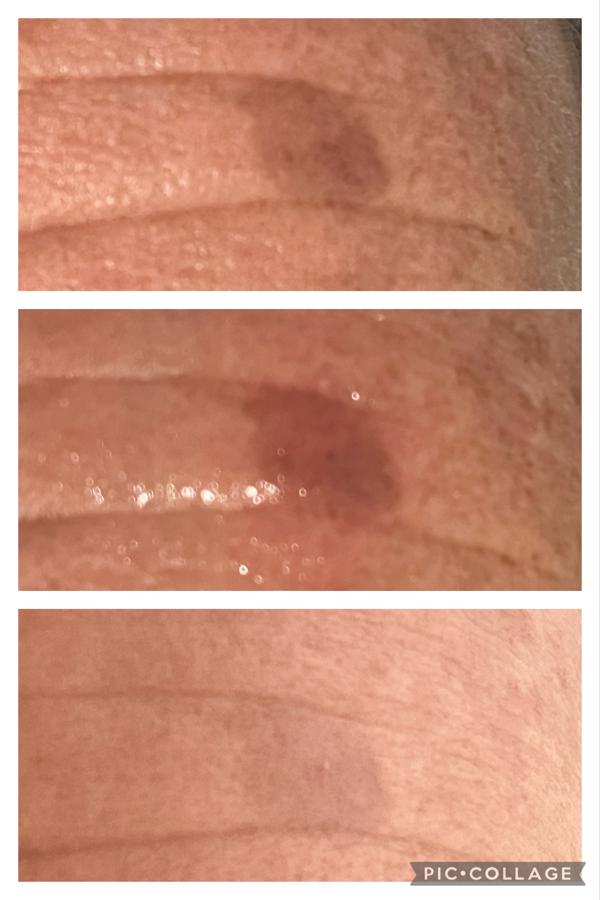Understanding the differences between moles and freckles can help in distinguishing between these two types of skin blemishes. In our BLOG this week, we will explore some of the most notable characteristics of moles and freckles.
Differentiating Between Moles and Freckles by Appearance
Various characteristics can help differentiate moles and freckles based on their appearance. Here are some key distinctions:
Moles:
- Shape and Texture – Moles typically have an oval or round form. Their texture can be smooth or slightly bumpy, and they can be raised or flat.
- Colour – Moles can range in colour from pink to black or dark brown, typically maintaining a consistent color throughout.
- Size – Moles can vary in size from a few millimeters to several centimeters. It’s important to monitor any significant changes in size over time.
- Borders – Moles usually have well-defined borders that are distinguishable from the surrounding skin, even if slightly uneven.
- Hair Growth – Some moles, especially those that are raised, may develop hair.
Freckles:
- Shape and Texture – Freckles typically have a flat texture and are smaller than moles.
- Colour – Freckles are usually light brown or tan. Their colour may vary and can appear lighter during the winter months.
- Size – Freckles are generally smaller than moles, ranging in size from a few millimeters to about a centimeter.
- Borders – Freckles often have indistinct borders that blend into the surrounding skin, making their edges less defined than those of moles.
- Distribution – Freckles are more common on sun-exposed areas of the body, such as the face, arms, and shoulders.
It’s important to remember that self-examination is useful for tracking changes in moles and freckles. If you have any concerns or uncertainties about skin marks, you should seek professional advice from a dermatologist. Regular skin check-ups and sun protection are essential for maintaining skin health.
Genetic and Environmental Factors Influencing Skin Marks
Both genetic and environmental factors influence the formation and nature of skin marks such as moles and freckles. Here’s a summary of how these factors contribute:
Genetic Factors:
- Moles – The tendency to develop moles can be inherited. People with multiple moles in their family are more likely to have multiple moles themselves. Some moles are linked to specific genetic mutations. Congenital moles, or birthmarks, can be caused by genetic factors.
- Freckles – Genetics also play a role in the likelihood of developing freckles. People with fair skin, light hair, and a family history of freckling are more prone to freckles. Variations in the MC1R gene are associated with red hair, fair skin, and a higher susceptibility to freckling.
Environmental Factors:
- Moles – The sun’s ultraviolet (UV) radiation and other environmental factors significantly impact the development of moles. Sunburns, especially in childhood, can increase the number of moles. People who live in sun-exposed areas are more likely to develop moles.
- Freckles – Sun exposure is closely related to the development of freckles. UV radiation stimulates melanin production, leading to freckle formation, which may darken in the sun. People in regions with higher sunlight levels are more likely to develop freckles.
The interaction between genetic predisposition and environmental factors, particularly sun exposure, has a substantial impact on the development of moles and freckles. While some factors are beyond one’s control, sun protection and regular skin monitoring are crucial for maintaining skin health and reducing the risk of skin-related issues.
Monitoring Changes in Moles and Freckles
Monitoring changes in moles and freckles is essential for maintaining skin health and detecting potential problems early. Regular self-examinations, along with professional checks by a dermatologist, can help ensure that any changes are promptly addressed. Here’s how to keep track of changes in moles and freckles:
- Establish a Routine: Perform self-examinations regularly, ideally once a month. Make it a habit by doing it on the same day each month.
- Use a Mirror: Use a full-length mirror and a hand-held mirror to examine areas that are hard to see, such as the back, scalp, and buttocks.
ABCDE Rule for Moles:
- Asymmetry – Check if one half of the mole is different from the other.
- Border – Look for irregular, blurred, or jagged edges.
- Colour – Watch for changes in color or multiple colours within the mole.
- Diameter – Keep an eye on any increase in mole size, especially if it exceeds 6 millimeters.
- Evolution – Note any changes over time, such as itching, tenderness, or shape changes.
EFG Rule for Freckles:
- Expansion – See if the freckle is growing in size.
- Fading – Observe if the freckle fades with less sun exposure.
- Generation – Look out for new freckles, especially in sun-exposed areas.
Make Use of a Skin Map: Create a map of your moles and freckles to better track their locations and changes.
As ever, please get in touch or book in with one of our Experts here, if you want to have a quick chat, please do give us a call on 01932 731762



